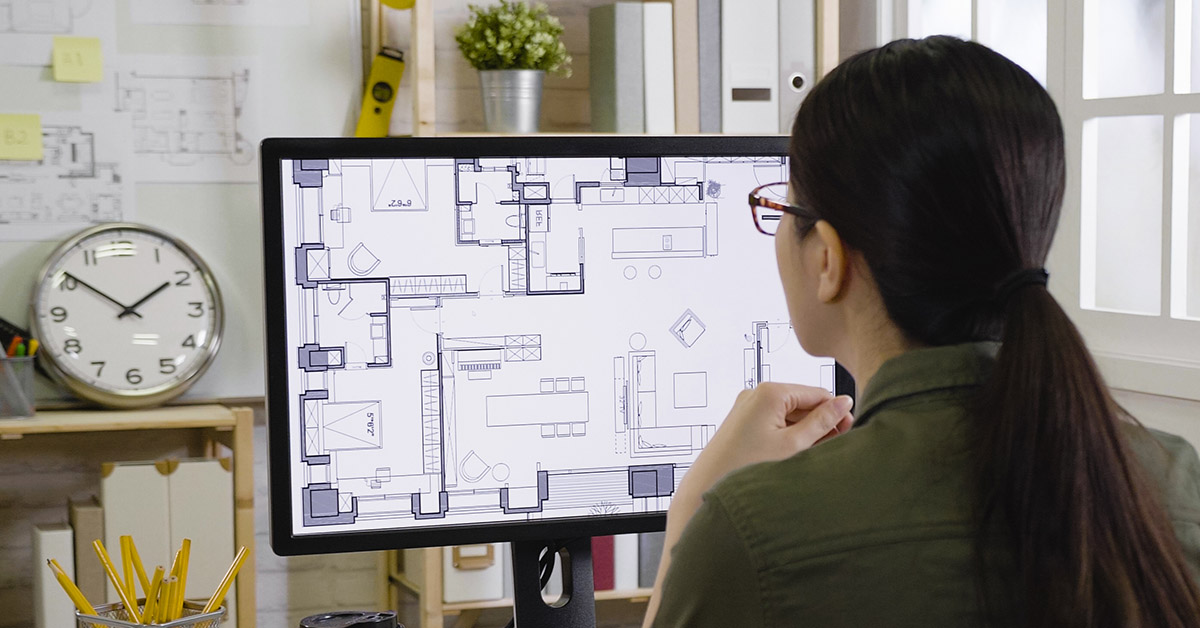The mortgage lending community is no stranger to market swings in transaction volumes for home-purchase loans and refinances. Over the years, the industry has become skilled in accommodating these shifts, notwithstanding how stressful they can be at times.
In doing so, new loan processing technologies — along with excellent communication among real estate personnel, lenders, underwriters and the appraisal community — have helped. The result has been a highly efficient mortgage industry that fosters homeownership for individual consumers while contributing significantly to the national economy.
Then the COVID-19 pandemic threw the mortgage industry a profound wrinkle. For a while, appraisers were subject to local restrictions on congregating with others in public and private settings. Also, many appraisers did not feel comfortable going into homes and many homeowners did not feel comfortable inviting non-family members inside.
Fortunately, the industry responded well, led by the government-sponsored enterprises (GSEs) Fannie Mae and Freddie Mac. In spring 2020, the agencies began accepting remote desktop appraisals nationwide on eligible transactions without the appraiser ever setting foot on the subject property. At the time, a useful alternative included the provision for exterior-only inspection as part of the appraisal (Form 2055) on certain mortgage transactions.
The complete package of flexibilities, which included alternative methods for documenting income and verifying employment before loan closing, worked as intended to get the lending pipeline back into action. Gradually, the appraisal environment has returned to normalcy and the loan processing flexibilities ended in July 2021.
Alternate method
Fast forward to March 2022. Fannie and Freddie announced that Form 1004 Desktop/70D appraisals would satisfy as an option for specified loans. No exterior or interior physical inspections were required, although lenders could still specify and order a traditional, full Uniform Residential Appraisal Report.
As explained, a desktop appraisal reported on Form 1004 Desktop/70D is permitted for certain transactions. The minimum scope of work required does not include a current inspection of the subject property or comparable sales by the appraiser. In their report, the appraiser must include a floor plan with interior walls and external dimensions, and they must obtain sufficient information to develop a credible report. Data provided by parties with a financial interest in selling or financing the subject property
must be verified by an independent source.
Loans eligible for this desktop appraisal must involve purchase transactions (including new construction) for a single-unit property (including an accessory dwelling unit or a home in a planned unit development). The home must be a principal residence. The loan-to-value ratio must be no higher than 90%, meaning that a downpayment of at least 10% was made. Only loans that fulfill the above conditions apply to the newly approved Form 1004/70D desktop appraisal through the GSEs.
The long list of ineligible transactions for these alternate appraisals includes two- to four-unit properties; condo and co-op units; manufactured homes; construction-to-permanent loans; and notably, second homes, investment properties and refinances. For more detailed information on how appraisers will be guided in these new desktop appraisals, Freddie Mac published an article this past March titled,
“Desktop Appraisal Assignments — A Practical Guide for Appraisers.”
Declining volumes
Certainly, the GSEs presented enthusiasm in introducing the new appraisal methodology. In its fact sheet, Fannie Mae talked about “leveraging the wealth of big data, the power of advanced analytics and the speed of technology.”
The desktop appraisal is a welcome new tool for lenders and appraisers, building on the industry’s pandemic-era experience and the ability to expedite certain loan transactions. Desktop appraisals were previously available for non-agency transactions, where they have seen limited use, and are principally for loss mitigation or home equity loans where the lender doesn’t want or need an internal inspection.
The mortgage industry is constantly faced with adjustments to lending volumes. Earlier this summer, purchase loan applications had decreased by about 8% year over year while refinancing activity had plummeted by 75%.
Consequently, strong demand has yet to emerge among lenders or appraisers for the new Fannie Mae and Freddie Mac desktop appraisals. For now, appraisers are comfortable getting back to interior inspections and feel that these in-person activities foster appraisal quality. The costs and turn times between the two models are comparable. Certainly, the situation may change in the future, and if it does, this new format is available to the industry.
Workload efficiency
Another argument made for using the new desktop appraisal is that it will help relieve an appraiser shortage. While current loan volume reductions have already lessened appraiser demand, national appraisal management companies (AMCs) are looking closely at ways to ensure there are enough appraisers to support the home lending industry.
AMCs are working to improve efficiencies in the assigning and processing of appraisals, including through advanced technology and case management systems, while maintaining the quality assurance that is vital to the integrity of the home mortgage system. AMCs also are looking at ways to attract talented, motivated individuals to the modern appraisal industry. This recruiting effort would provide a verifiable training environment and apprenticeship, filling a void the industry has experienced with the reduction in traditional, solo appraisal shops.
A full 1004 Uniform Residential Appraisal Report — conducted for many purposes including certain purchase and refinance transactions — remains the gold standard for single-family residential appraisals. But the industry now has access to alternate valuation methods depending on the borrower’s situation and the lender’s requirements. Within this context, the new desktop appraisals from Fannie Mae and Freddie Mac join the appraisal toolbox. ●
-
Michael Dresden is the president of Dart Appraisal, an independently owned and nationwide appraisal management company. Established in 1993, Dart has continued to be an appraisal management leader for 27 years. As the chief integrator for all branches of Dart Appraisal, Dresden works closely with the company’s leadership team to create and fulfill a comprehensive strategic plan that delivers consistent, reliable and customized service to a broad range of clients throughout the U.S. Learn more at dartappraisal.com.
View all posts





